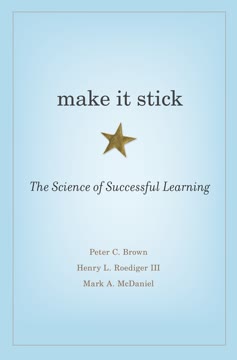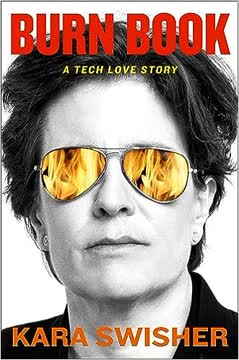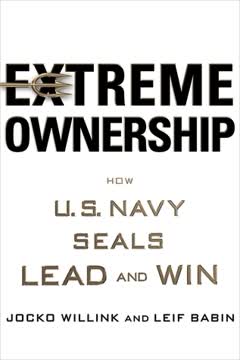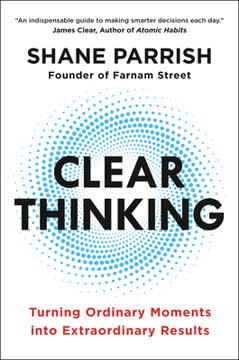Key Takeaways
1. Agility is the Master Competency in a Turbulent World
Leadership agility isn’t just another tool for your toolkit. It’s the master competency needed for sustained success in today’s turbulent economy.
Accelerating Change and Complexity. The modern world is characterized by rapid technological advancements, globalization, and interconnectedness, leading to unprecedented levels of change and complexity. Organizations and leaders must adapt quickly to survive and thrive. Agility is no longer a desirable trait but a fundamental requirement for success.
The Agility Gap. Many organizations struggle to keep pace with the demands of the modern business environment. This "agility gap" stems from a lack of agile leaders at all levels, not just in the executive suite. Developing agile leaders is crucial for bridging this gap and fostering organizational resilience.
Beyond Flexibility and Adaptability. Agility is more than just being flexible or adaptable. It implies a proactive and intentional stance, anticipating change and initiating action rather than simply reacting to events. Agile leaders are not just survivors; they are change agents who shape their environment.
2. Leadership Agility Defined: Navigating Change Effectively
Leadership agility is directly analogous to organizational agility: It’s the ability to take wise and effective action amid complex, rapidly changing conditions.
Taking Wise and Effective Action. Leadership agility is the capacity to make sound judgments and take decisive steps in the face of uncertainty and volatility. It's about more than just reacting; it's about proactively shaping the future.
Key Elements of Agility:
- Anticipating change: Seeing trends and potential disruptions before they become mainstream.
- Understanding complexity: Grasping the interconnectedness of various factors and their potential impact.
- Taking effective action: Making decisions and implementing strategies that lead to positive outcomes.
Agility as a Mindset and Skillset. Leadership agility encompasses both a way of thinking and a set of practical skills. It requires a combination of mental flexibility, emotional intelligence, and strategic competence.
3. Five Levels of Leadership Agility: A Developmental Journey
Based on data collected from more than six hundred managers, we’ve found that there are five distinct levels in the mastery of leadership agility: Expert, Achiever, Catalyst, Co-Creator, and Synergist.
A Stage-Based Model. Leadership agility develops through a series of distinct levels, each building upon the previous one. These levels represent increasing sophistication in navigating change and complexity.
The Five Levels:
- Expert: Focuses on tactical problem-solving.
- Achiever: Drives strategic outcomes.
- Catalyst: Shapes organizational culture.
- Co-Creator: Seeks collaborative purpose.
- Synergist: Transforms systems intuitively.
Sequential Progression. Leaders typically progress through these levels in a sequential manner, mastering the competencies of each stage before moving on to the next. It's a journey of continuous growth and development.
4. Expert Level: Tactical Problem Solvers
Experts (roughly 45 percent of all managers) are the least agile of those profiled in the chart, but they’re more agile than about 10 percent who remain at Pre-expert levels.
Expertise and Authority. Expert leaders derive their power from their knowledge and positional authority. They excel at solving specific problems within their area of expertise.
Characteristics of Expert Leaders:
- Strong problem-solving orientation
- Tactical focus
- Independent and analytical thinking
- Reliance on expertise and authority
Limitations. Expert leaders often struggle with strategic thinking, collaboration, and adapting to rapidly changing conditions. They may also have difficulty understanding and appreciating diverse perspectives.
5. Achiever Level: Strategic Outcome Drivers
About 35 percent of today’s managers have developed to the Achiever level of agility.
Strategic Thinking and Goal Orientation. Achiever leaders are driven to accomplish outcomes valued by their organizations. They can think strategically and motivate others to contribute to important goals.
Characteristics of Achiever Leaders:
- Strong individual identity
- Strategic thinking skills
- Outcome-oriented
- Ability to motivate others
Limitations. Achiever leaders may struggle with ambiguity, collaboration, and adapting to disruptive change. They may also be overly focused on achieving specific outcomes at the expense of other considerations.
6. Catalyst Level: Visionary Culture Shapers
Catalysts, with their openness to change, their willingness to rethink basic assumptions, and their visionary orientation, represent the first level of agility capable of sustained success in today’s highly complex, constantly changing business environment.
Vision and Participation. Catalyst leaders are motivated to create a participative culture capable of achieving valued outcomes over the longer term. They are open to change and willing to rethink basic assumptions.
Characteristics of Catalyst Leaders:
- Visionary orientation
- Openness to change
- Willingness to rethink assumptions
- Emphasis on participation and collaboration
Limitations. Catalyst leaders may struggle with the practical details of implementation and may sometimes be overly idealistic. They may also have difficulty dealing with resistance to change.
7. Co-Creator Level: Collaborative Purpose Seekers
Because of their principled commitment to the common good, many of the Co-Creators in our sample have pioneered new forms of organization where corporate responsibility is integral to their bottom line.
Interdependence and Shared Purpose. Co-Creator leaders understand that everything in business and life is interdependent. They are committed to the common good and seek to develop genuinely collaborative relationships rooted in a deep sense of shared purpose.
Characteristics of Co-Creator Leaders:
- Principled commitment to the common good
- Emphasis on collaboration and shared purpose
- Emotional resilience
- Ability to generate win-win solutions
Limitations. Co-Creator leaders may struggle with making tough decisions that require trade-offs and may sometimes be overly focused on consensus.
8. Synergist Level: Intuitive System Transformers
This ability to remain centered amid competing demands allows them to access “synergistic intuitions” that transform seemingly intractable conflicts into solutions that are beneficial for all parties involved.
Present-Centered Awareness and Intuition. Synergist leaders are deeply attuned to the present moment and possess a remarkable ability to transform seemingly intractable conflicts into solutions that benefit all parties involved.
Characteristics of Synergist Leaders:
- Present-centered awareness
- Intuitive problem-solving
- Ability to transform conflict
- Deep commitment to the common good
Limitations. Synergist leaders may be difficult to understand and may sometimes be perceived as being too idealistic or impractical.
9. The Leadership Agility Compass: Four Essential Competencies
Highly agile leaders orchestrate the four competencies we’ve just described so they work in concert.
Four Interrelated Competencies. The Leadership Agility Compass highlights four mutually reinforcing competencies that are essential for agile leadership: context-setting agility, stakeholder agility, creative agility, and self-leadership agility.
Context-Setting Agility:
- Scanning the environment
- Framing initiatives
- Clarifying outcomes
- Underlying capacities: situational awareness and sense of purpose
Stakeholder Agility:
- Identifying key stakeholders
- Understanding their stakes
- Assessing alignment
- Increasing alignment
- Underlying capacities: stakeholder understanding and power style
Creative Agility:
- Identifying key issues
- Generating options
- Deciding on solutions
- Underlying capacities: connective awareness and reflective judgment
Self-Leadership Agility:
- Determining the kind of leader you want to be
- Experimenting toward aspirations
- Reflecting on experience
- Fine-tuning changes
- Underlying capacities: self-awareness and developmental motivation
10. Cultivating Agility: An Inside-Out and Outside-In Approach
The fastest and most reliable way is to use an integral approach, one that combines the usual outside-in approach to leadership development with an inside-out approach.
Outside-In Development. Developing agile leadership competencies and putting them into action. This involves learning new skills and behaviors.
Inside-Out Development. Cultivating the mental and emotional capacities that make agile leadership competencies possible. This involves personal growth and self-awareness.
An Integral Approach. The most effective way to increase leadership agility is to combine outside-in and inside-out approaches. This involves using everyday initiatives to develop stage-related capabilities and leadership competencies at the same time.
Last updated:
Review Summary
Leadership Agility receives mostly positive reviews, with readers praising its insightful approach to leadership development. Many appreciate the book's structured framework, clear language, and research-backed content. Reviewers highlight the book's challenge to conventional leadership models and its emphasis on personal growth. Some readers find the content intense and occasionally difficult to follow due to jargon and numerous case studies. Despite these criticisms, many consider it a valuable resource for current and aspiring leaders, offering a fresh perspective on leadership evolution and practical guidance for improvement.
Similar Books
Download PDF
Download EPUB
.epub digital book format is ideal for reading ebooks on phones, tablets, and e-readers.










